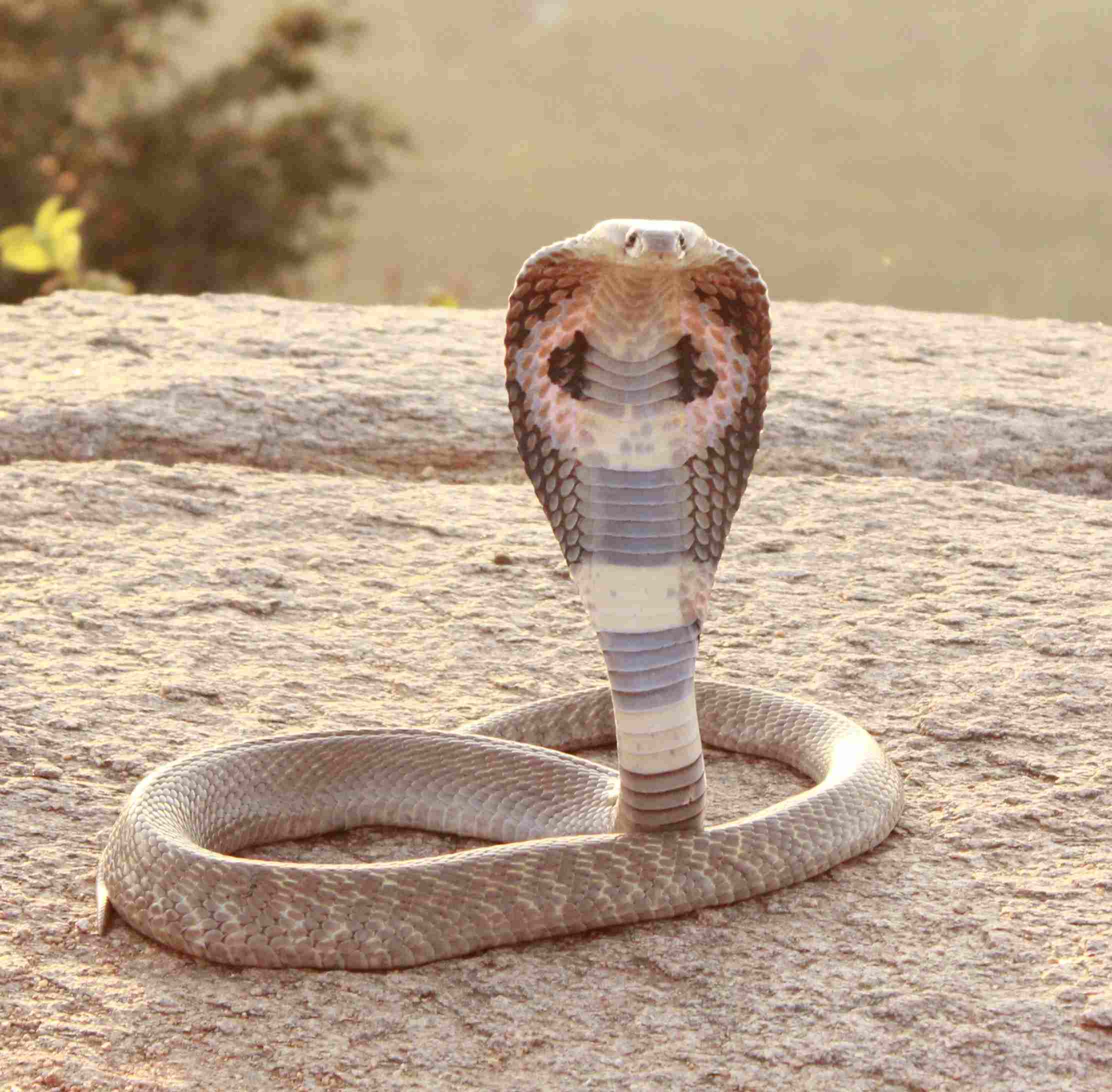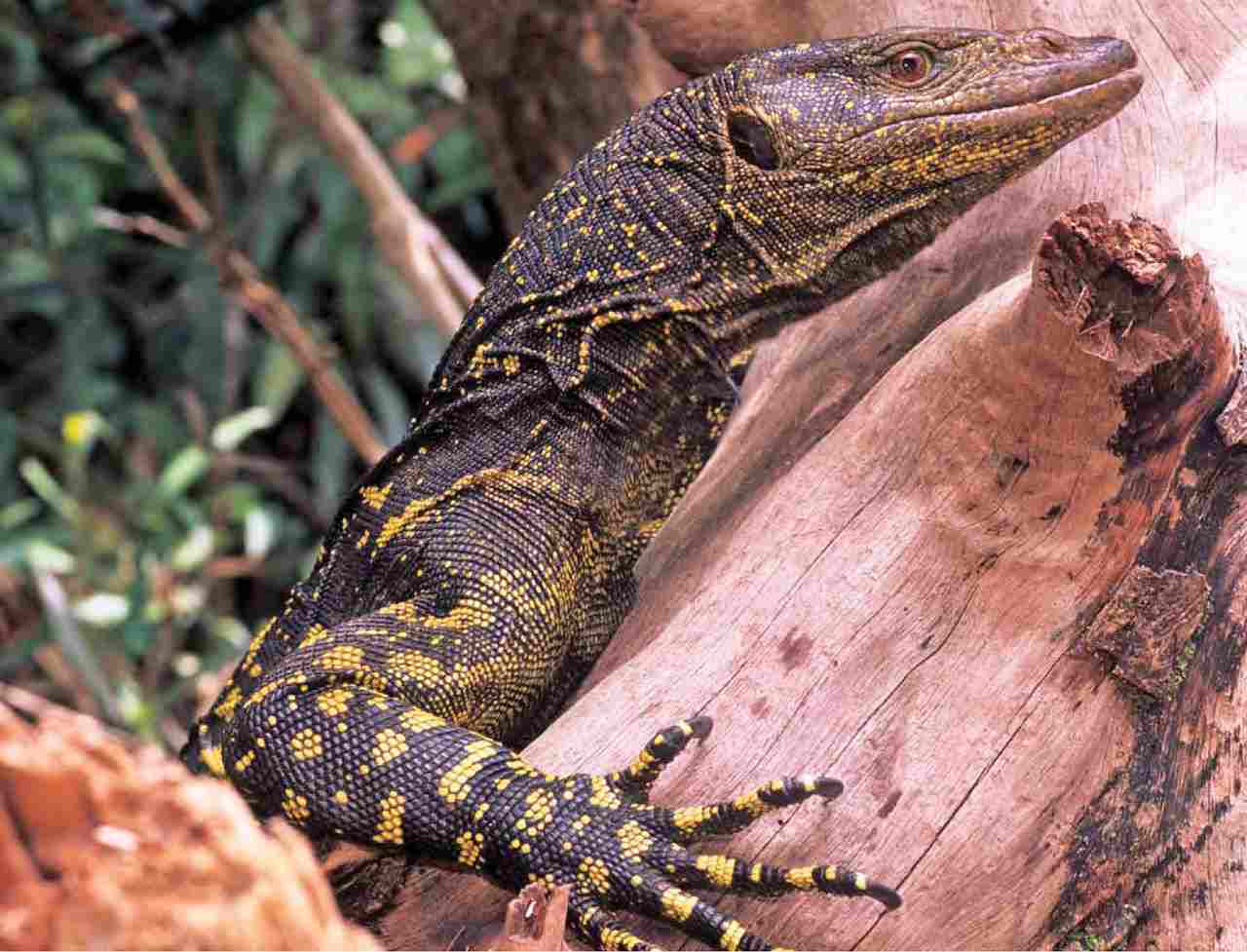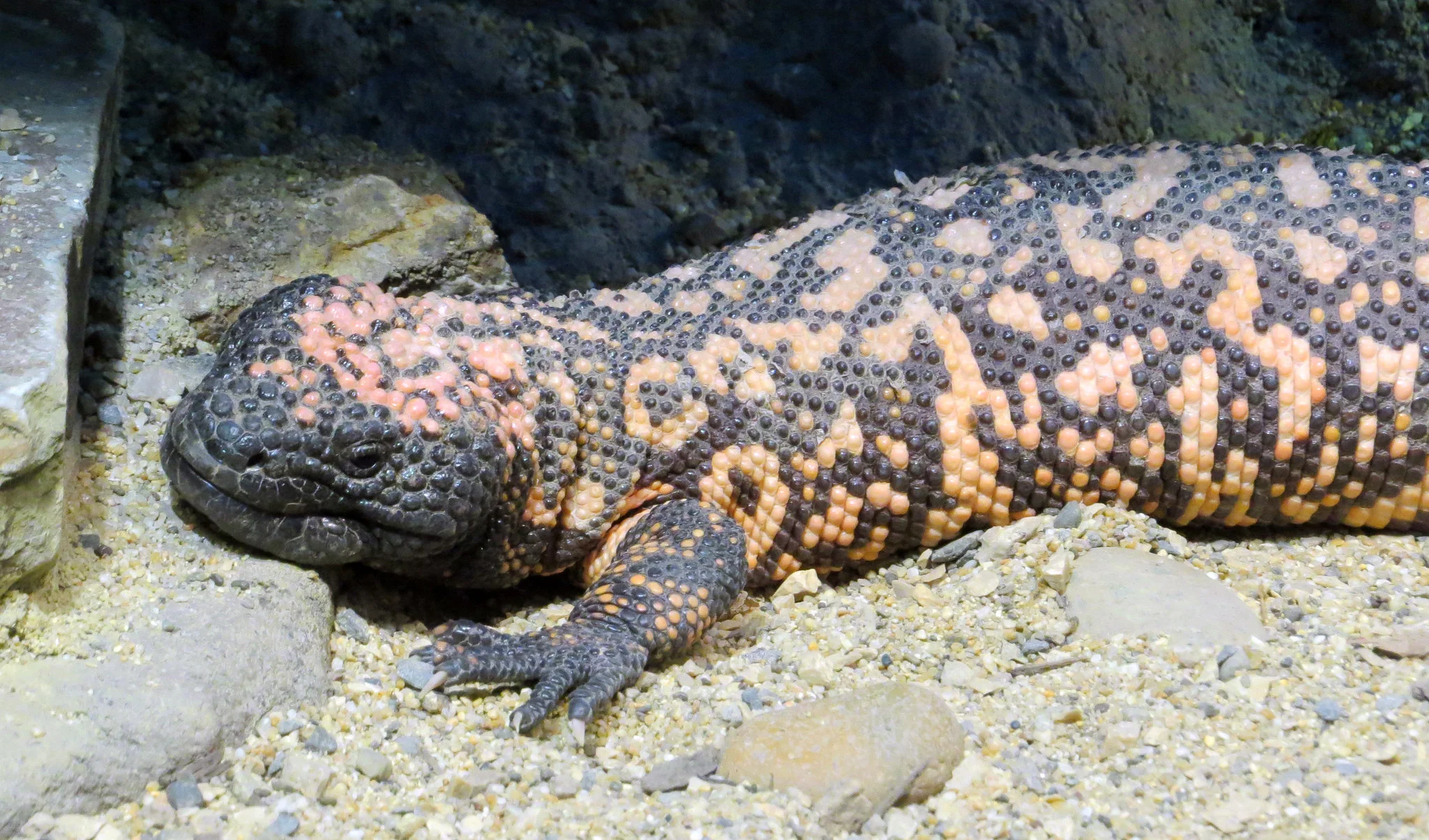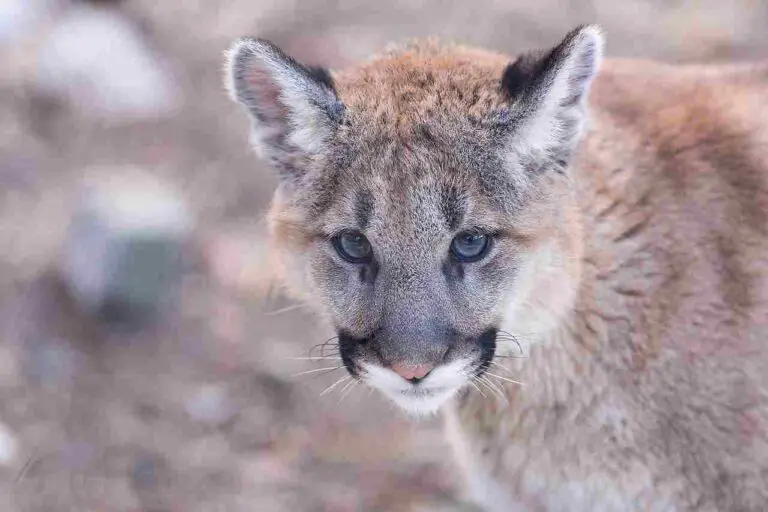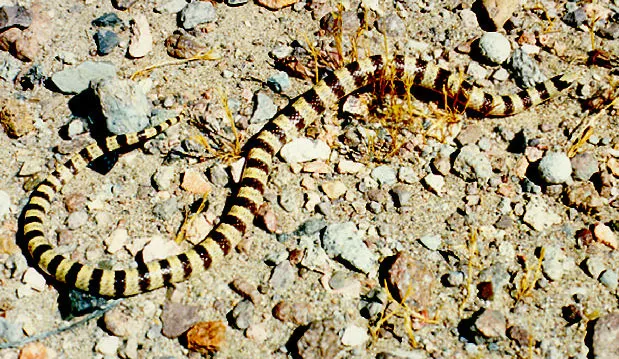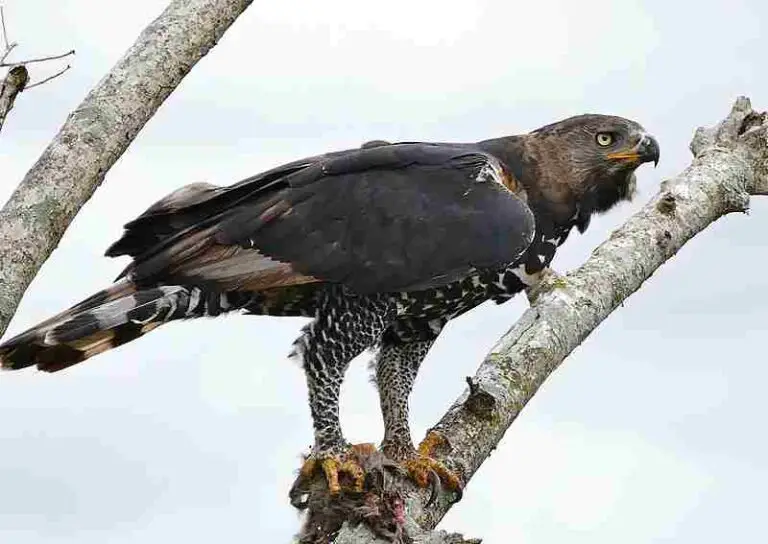Komodo Dragon Vs Anaconda Who Would Win, Overall Comparison
Examining the Komodo dragon and the anaconda unveils their shared classification as reptiles, despite significant differences in their physical attributes and predatory strategies. While both are formidable predators in their own right, an adult anaconda would likely prevail in a confrontation with a Komodo dragon due to its capability to grow far larger and heavier. The anaconda’s ability to constrict, combined with its size advantage, positions it as a formidable adversary. However, it’s essential to note that full-grown Komodo dragons would likely succeed against juvenile anacondas, leveraging their size and strength in these encounters.
I. Komodo Dragon vs Anaconda: Reptilian Predators with Varied Attributes:
– The Komodo dragon and anaconda, both classified as reptiles, showcase differences in physical attributes and predatory strategies that influence the outcomes of potential confrontations.
II. Physical Differences:
– While both reptiles, Komodo dragons are four-footed and venomous, relying on bites to subdue prey. In contrast, anacondas are constrictors, utilizing their muscular bodies to overpower and immobilize prey before consuming it.
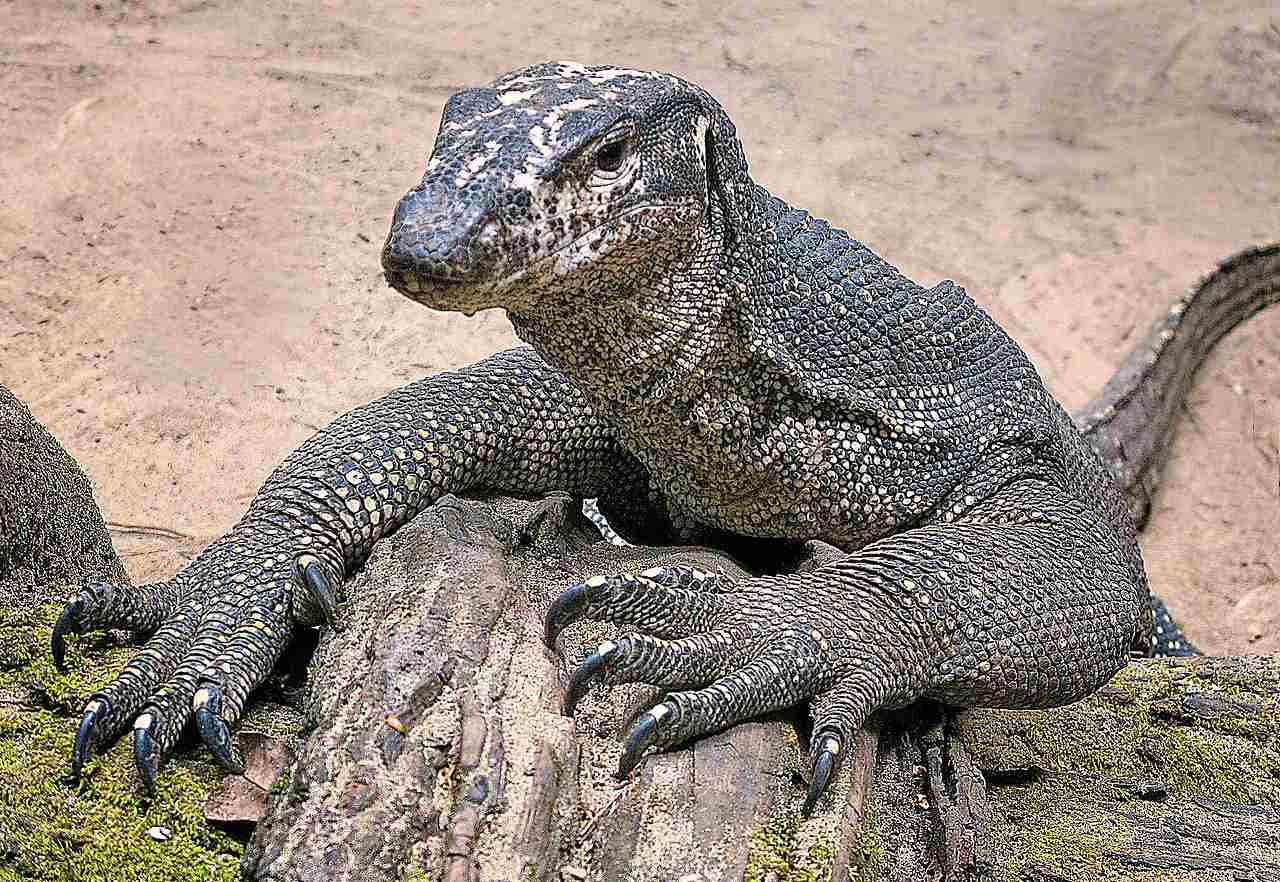
III. Size and Constriction Strategy:
– Adult anacondas are capable of growing far larger and heavier than Komodo dragons. In a fight, the anaconda’s strategy of constriction becomes a significant advantage, enabling it to overpower the Komodo dragon by squeezing it before it can sufficiently defend itself.
IV. Bite Force and Venom:
– Komodo dragons, while possessing venomous saliva, do not have sufficient bite force, speed, or potent enough venom to overcome the size and strength of adult anacondas. The anaconda’s constricting technique compensates for the Komodo dragon’s lack of physical prowess.
V. Juvenile Anacondas vs Full-grown Komodo Dragons:
– In contrast to their potential vulnerability against adult anacondas, full-grown Komodo dragons would likely prevail against juvenile anacondas. The size and strength advantages of the Komodo dragon would allow it to overcome the less formidable juvenile anaconda.
VI. Real-life Predator Dynamics:
– In a real-life confrontation between an adult anaconda and a Komodo dragon, the anaconda’s size, weight, and constricting strategy would likely secure its victory. This highlights the importance of understanding the specific attributes and strategies of each predator in predicting real-world outcomes.
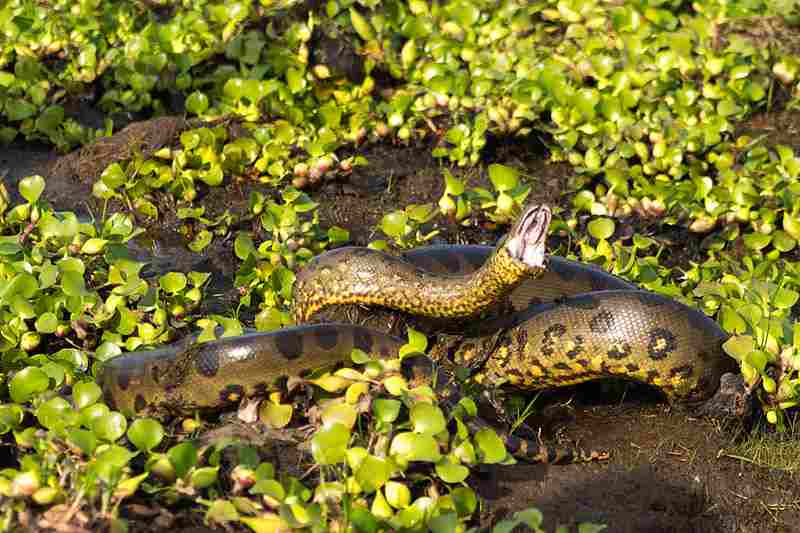
VII. Conservation Significance:
– Recognizing the unique attributes and interactions between Komodo dragons and anacondas is crucial for conservation efforts. Tailoring strategies to protect these reptiles contributes to the preservation of biodiversity and ecosystem balance in their respective habitats.
*Details of Comparison
| Criteria | Komodo Dragon | Anaconda |
| Appearance | Robust build, scaly skin, venomous bite. |
Streamlined body, glossy skin, constrictive abilities.
|
| Size | Up to 10 feet (3 meters). |
Green Anaconda over 20 feet (6 meters), Yellow Anaconda around 10 feet (3 meters).
|
| Weight | Males around 200 pounds (91 kg). |
Green Anaconda over 550 pounds (250 kg), Yellow Anaconda around 100 pounds (45 kg).
|
| Bite Force (PSI) | Approximately 50 PSI. |
Powerful bite for subduing prey.
|
| Physical Offensive Advantages | Speed, sharp claws, venom. |
Constriction, aquatic hunting.
|
| Physical Defensive Advantages | Tough skin, climbing ability. |
Aquatic camouflage, muscular body.
|
| Speed | Up to 12 mph (19 km/h). |
Faster in water, around 10 mph (16 km/h).
|
| Agility | Agile on land, climbs trees. |
Highly agile in water.
|
| Senses | Excellent sense of smell, better eyesight on land. |
Excellent sense of smell, heat-sensing pits.
|
| Overall Physical Capacity | Versatile on land. |
Specialized for aquatic environments.
|
| Habitat Preference(s) and Geographic Region | Dry, tropical forests in Indonesian islands. |
Tropical rainforests, swamps, and marshes in South America.
|
| Tracks | Clawed footprints on land. |
No discernible tracks on land, subtle disturbances in water.
|
| Lifespan | Up to 20 years. |
Green Anaconda 10-15 years, Yellow Anaconda similar.
|
| Mode of Feeding | Carnivorous, broad range of prey. |
Carnivorous, primarily aquatic prey.
|
| Intelligence | More advanced cognitive abilities. |
Limited cognitive abilities.
|
| Social Behavior | Primarily solitary, occasional social interactions. |
Primarily solitary, occasional social interactions.
|
| Mode of Reproduction | Oviparous. | Ovoviviparous. |
| Parental Behavior | Limited parental care in both species. |
Limited parental care in both species.
|
| Proximity to Human-Inhabited Areas | Remote Indonesian islands. |
Closer to human settlements in South America.
|
| Behavior Toward Humans | Generally avoids humans, defensive if provoked. |
Generally avoids humans, defensive if provoked.
|
| Danger Posed to Humans | Higher risk due to powerful bites and bacterial infections. |
Generally lower risk unless provoked.
|
| Associated Precautions | Requires greater precautions due to potential bacterial infections. |
Limited precautions needed, avoiding provocation is key.
|
| Conservation Status | Vulnerable. |
Green Anaconda least concern, other species may face threats.
|
| Conclusion |
Both apex predators, but differences in size, habitat, and conservation status. Komodo Dragons face a higher risk of extinction.
|
1. Taxonomy:
Komodo Dragon:
Kingdom: Animalia
Phylum: Chordata
Class: Reptilia
Order: Squamata
Family: Varanidae
Genus: Varanus
Species: V. komodoensis
Anaconda:
Kingdom: Animalia
Phylum: Chordata
Class: Reptilia
Order: Squamata
Family: Boidae
Genus: Eunectes
Species: Multiple species within the genus, including E. murinus (Green Anaconda) and E. notaeus (Yellow Anaconda)
2. Appearance:
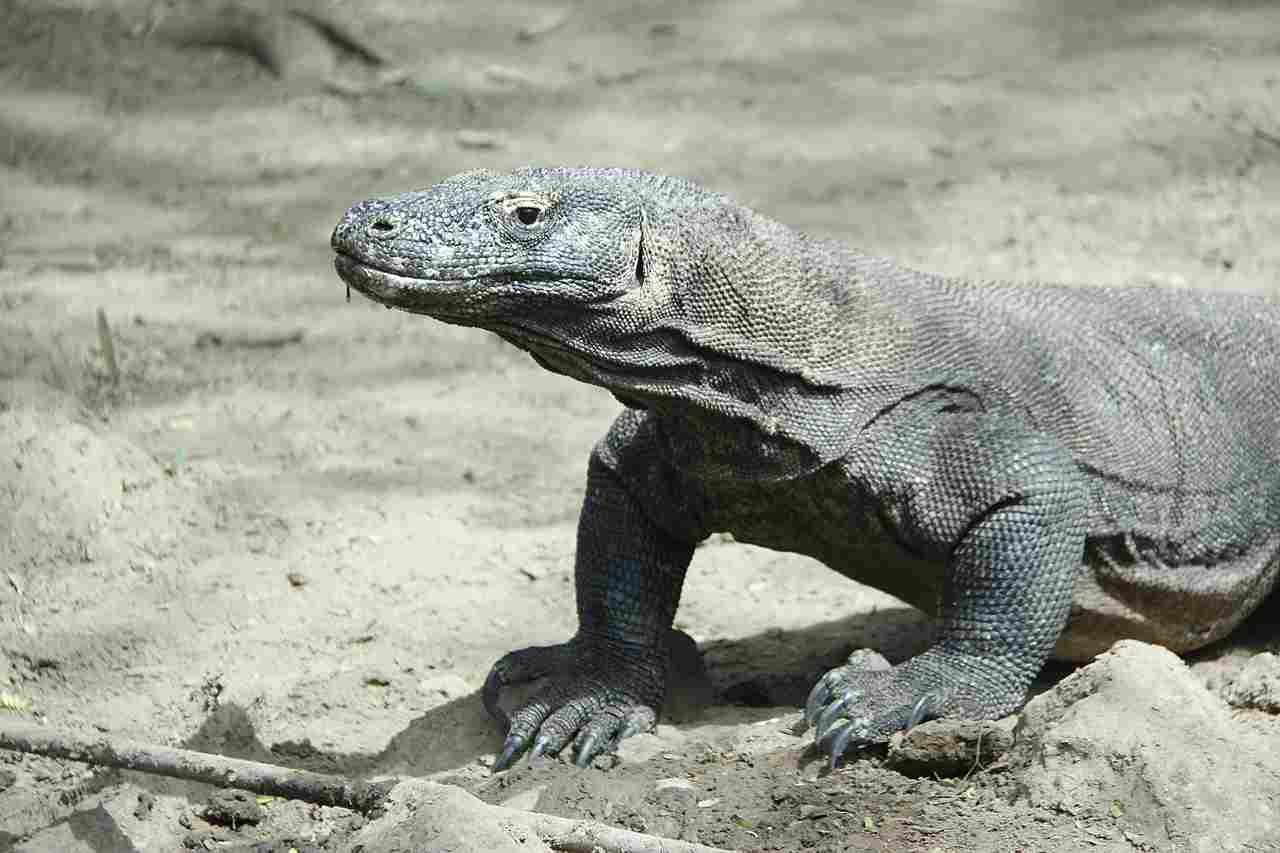
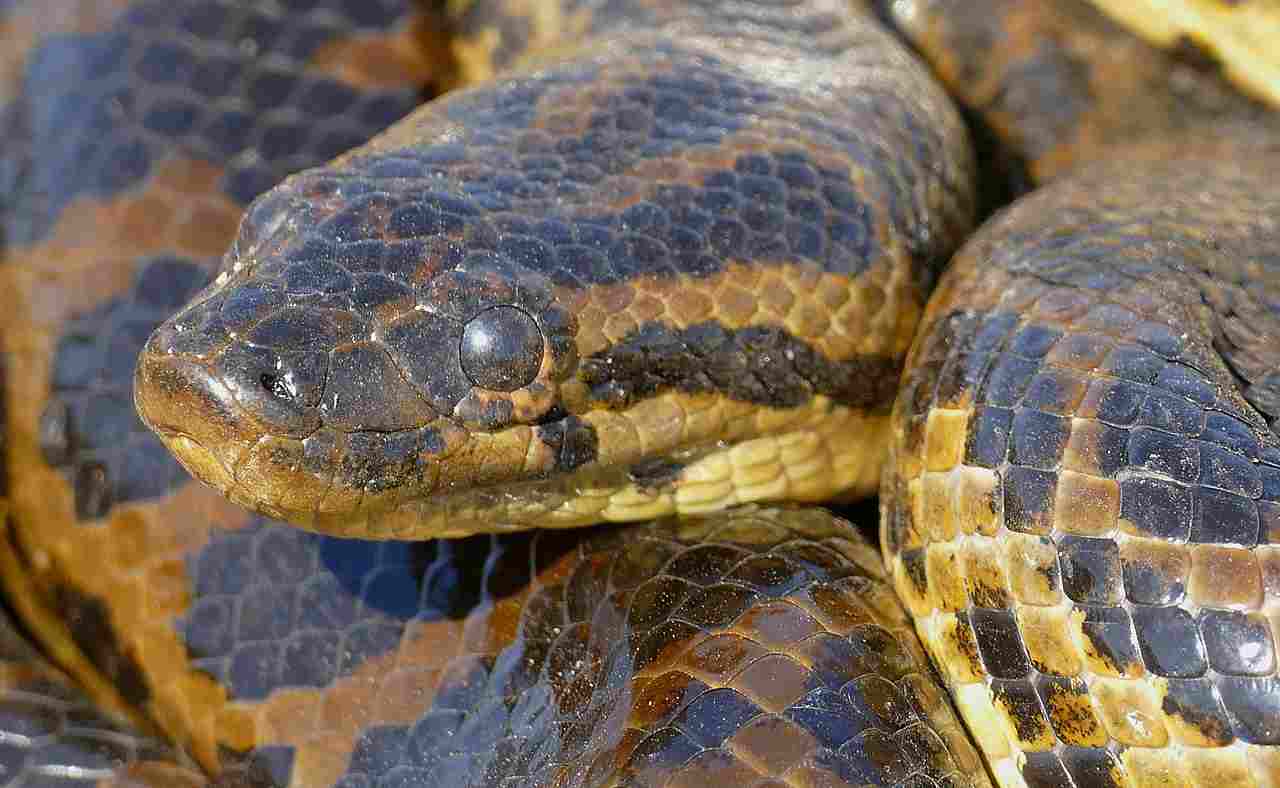
Komodo Dragon:
Robust, powerful build with a flat head and long tail.
Rough, scaly skin ranging in color from gray to brown.
Sharp claws and serrated teeth.
Anaconda:
Streamlined body, heavy in the middle with a distinctive, broader head.
Smooth, glossy skin, often olive-green in color with black markings.
Possesses heat-sensing pits around the mouth.
Comparison:
Both exhibit adaptations for their respective environments; the Komodo Dragon’s armored appearance suits its terrestrial lifestyle, while the anaconda’s sleekness aids in aquatic movement.
Ecological Implications:
Komodo Dragons’ appearance assists in their predatory role on land, relying on strength and agility.
Anacondas’ appearance is adapted for an aquatic lifestyle, aiding in stealth while hunting in water.
3. Size:
Komodo Dragon:
Adult males can reach lengths of up to 10 feet (3 meters).
Females are generally smaller, around 6.5 feet (2 meters).
Anaconda:
The Green Anaconda holds the record as one of the heaviest snakes, with females reaching lengths of over 20 feet (6 meters).
Yellow Anacondas are slightly smaller, typically around 10 feet (3 meters).
Comparison:
Anacondas, particularly the Green Anaconda, tend to be larger than Komodo Dragons.
Ecological Implications:
Size plays a role in their ecological niches; the Komodo Dragon’s size aids in hunting on land, while the Anaconda’s size contributes to its prowess in aquatic environments.
4. Weight:
Komodo Dragon:
Adult males weigh around 200 pounds (91 kilograms).
Females generally weigh less, around 150 pounds (68 kilograms).
Anaconda:
Green Anacondas can weigh over 550 pounds (250 kilograms).
Yellow Anacondas are smaller, with weights ranging around 100 pounds (45 kilograms).
Comparison:
Anacondas, especially the Green Anaconda, are significantly heavier than Komodo Dragons.
Ecological Implications:
Weight contributes to the predatory strategies; the Komodo Dragon relies on agility, while the Anaconda uses its mass for constriction and overpowering prey.
5. Bite Force (PSI):
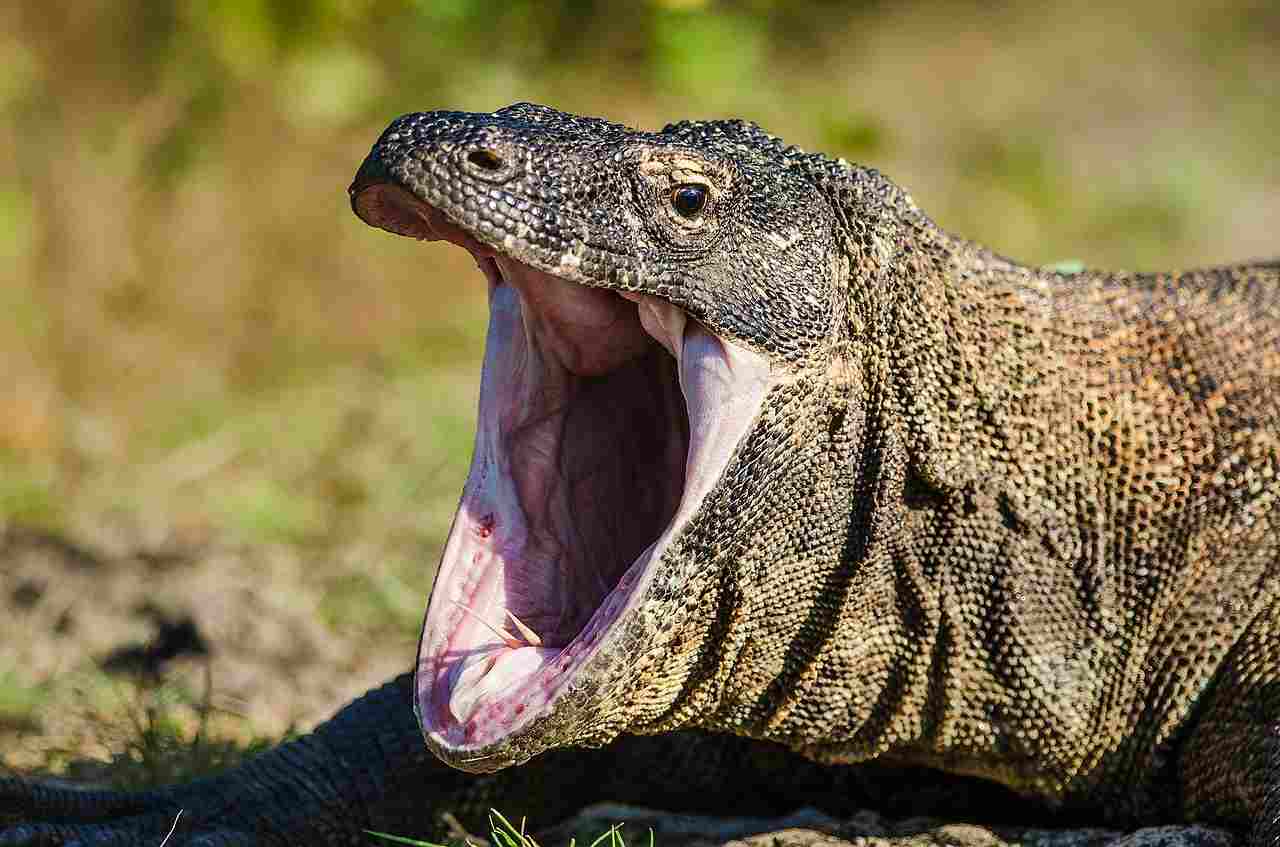
Komodo Dragon:
Estimated bite force of around 50 PSI.
Anaconda:
Specific PSI not well-documented, but they are known for powerful bites used in subduing prey.
Comparison:
Komodo Dragons have a documented PSI, whereas Anacondas are noted for powerful bites but lack specific measurements.
Ecological Implications:
The bite force is crucial for both species in capturing and subduing their prey, contributing to their ecological roles as predators.
6. Physical Offensive Advantages:
Komodo Dragon:
Exceptional speed on land for short bursts.
Sharp claws and teeth for tearing into prey.
Utilizes a combination of venom and bacteria in its saliva to weaken and eventually incapacitate prey.
Anaconda:
Powerful constriction ability to immobilize and suffocate prey.
Well-adapted to aquatic hunting with streamlined body and excellent swimming skills.
Comparison:
Komodo Dragons rely on speed, sharp appendages, and a unique venomous bite, while Anacondas employ constrictive capabilities and aquatic prowess for offensive strategies.
Ecological Implications:
These offensive adaptations contribute to their roles as apex predators in their respective environments.
7. Physical Defensive Advantages:

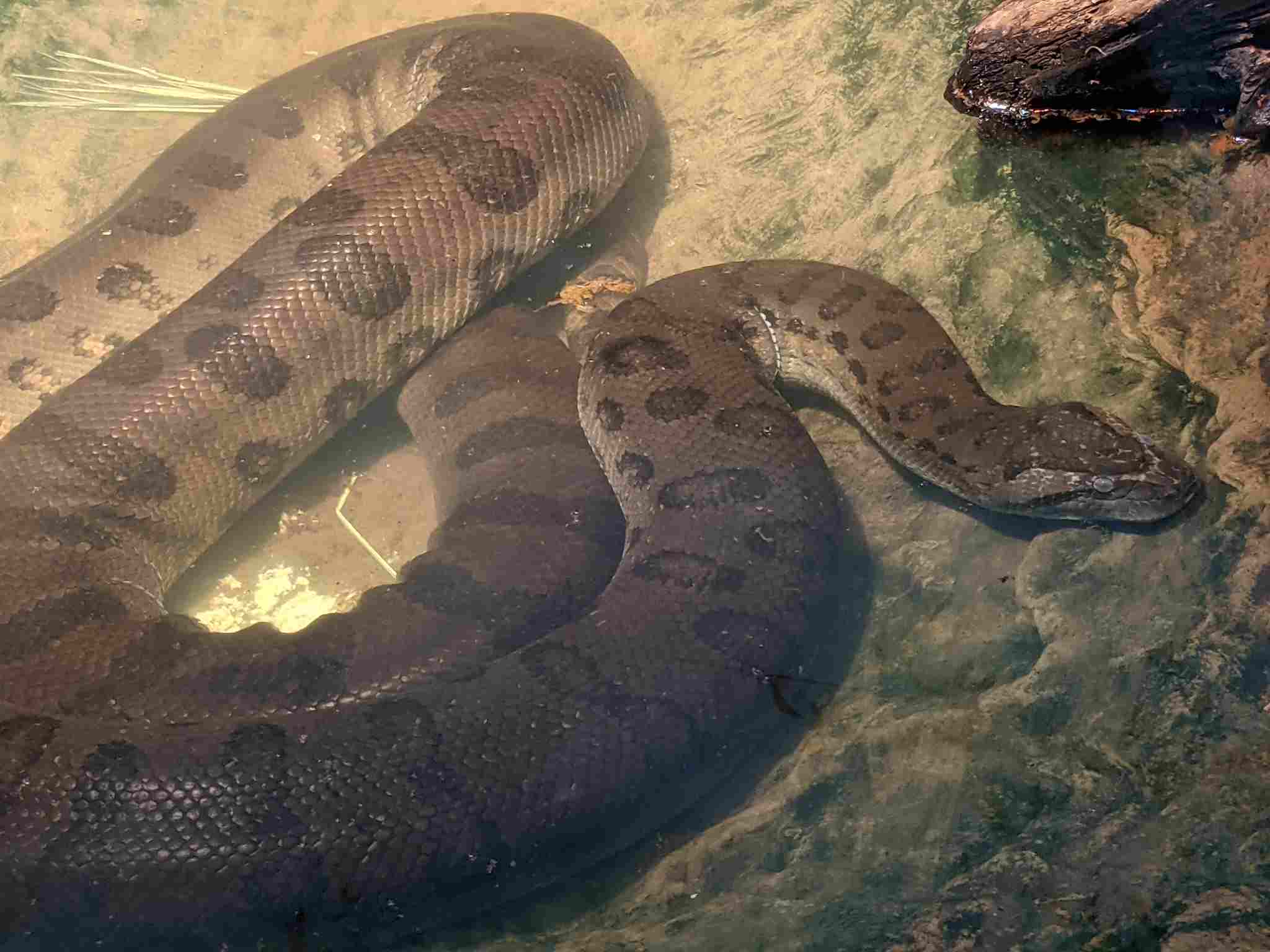
Komodo Dragon:
Tough, scaly skin provides natural armor.
Strong tail used for balance and defense.
Capable of climbing trees to escape threats.
Anaconda:
Blend well with aquatic environments, making them challenging to spot.
Thick, muscular body acts as a deterrent to predators.
Can remain submerged for long periods, minimizing exposure to threats.
Comparison:
Both species possess physical defenses suited to their habitats, with Komodo Dragons focusing on terrestrial adaptations, while Anacondas excel in aquatic defenses.
Ecological Implications:
Defensive features contribute to their survival in ecosystems, allowing them to evade or withstand potential threats.
8. Speed (Km/hour or Mile/hour):
Komodo Dragon:
Capable of reaching speeds up to 12 mph (19 km/h) for short distances.
Anaconda:
Relatively slow on land, but agile and swift in water, reaching speeds around 10 mph (16 km/h).
Comparison:
Komodo Dragons are faster on land, while Anacondas showcase their agility in aquatic environments.
Ecological Implications:
Speed adaptations align with their hunting strategies; Komodo Dragons rely on quick pursuits on land, while Anacondas excel in water-based maneuvers.
9. Agility:
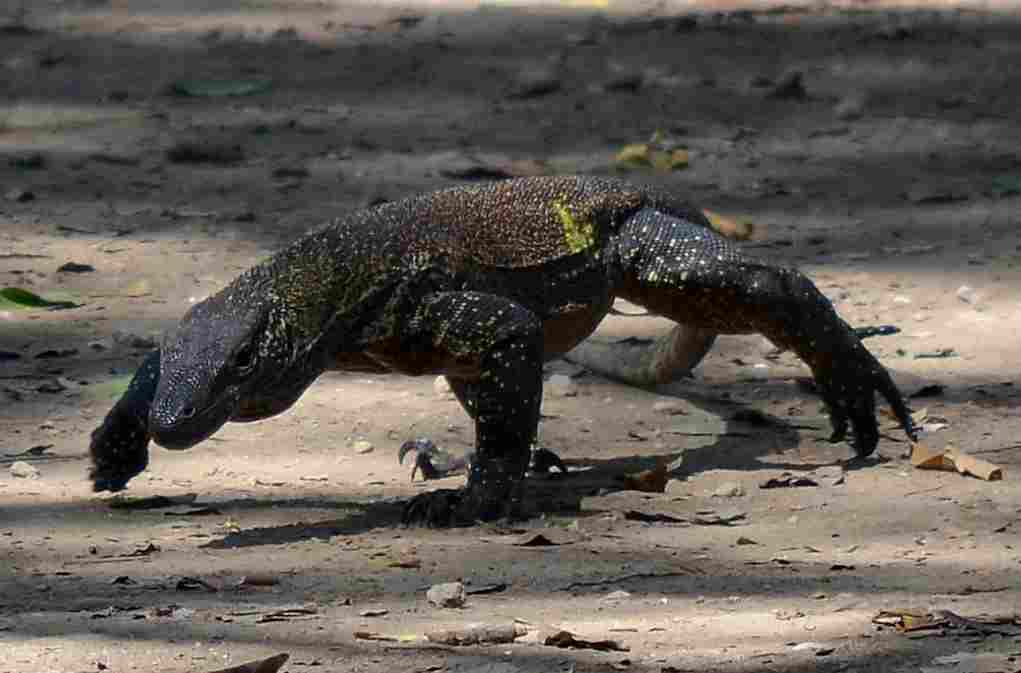
Komodo Dragon:
Agile on land with the ability to climb trees.
Can make rapid turns and maneuvers.
Anaconda:
Highly agile in water, capable of navigating through various aquatic environments.
Less agile on land due to their body structure.
Comparison:
Komodo Dragons showcase agility on land, while Anacondas demonstrate exceptional agility in water.
Ecological Implications:
Their agility reflects their adaptability to different terrains, contributing to their effectiveness as predators in their respective habitats.
10. Senses:
Komodo Dragon:
Excellent sense of smell, aiding in locating prey.
Good eyesight during the day.
Tactile senses through specialized scales on the jaw, helping to detect vibrations.
Anaconda:
Exceptional sense of smell, crucial for locating prey in water.
Limited eyesight but highly sensitive to vibrations in the water.
Heat-sensing pits around the mouth assist in detecting warm-blooded prey.
Comparison:
Both species rely heavily on their sense of smell, with Komodo Dragons utilizing good eyesight on land, and Anacondas relying more on vibrations and heat sensing in aquatic environments.
Ecological Implications:
Sensitive senses contribute to their efficiency as predators, helping them navigate and locate prey in their respective habitats.
11. Overall Physical Capacity:
Komodo Dragon:
Well-adapted for terrestrial hunting with a combination of speed, strength, and venom.
Agile climbers, providing versatility in their habitat.
Anaconda:
Specialized for aquatic hunting, leveraging powerful constriction and stealth in water.
Limited agility on land but excels in water-based environments.
Comparison:
Komodo Dragons are versatile on land, while Anacondas are specialized for aquatic environments.
Ecological Implications:
Their overall physical capacity aligns with their ecological roles, allowing them to thrive in specific ecosystems.
12. Habitat Preference(s) and Geographic Region:
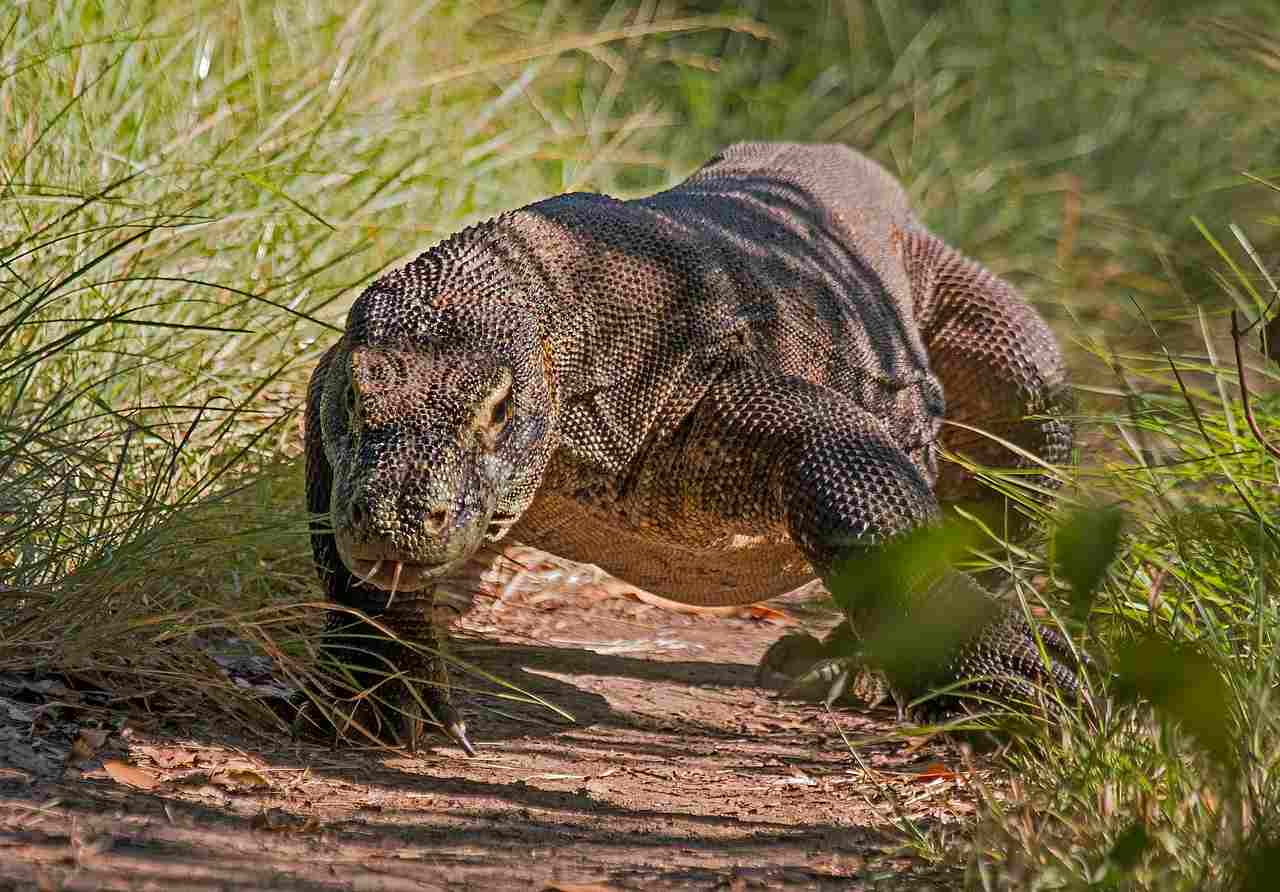
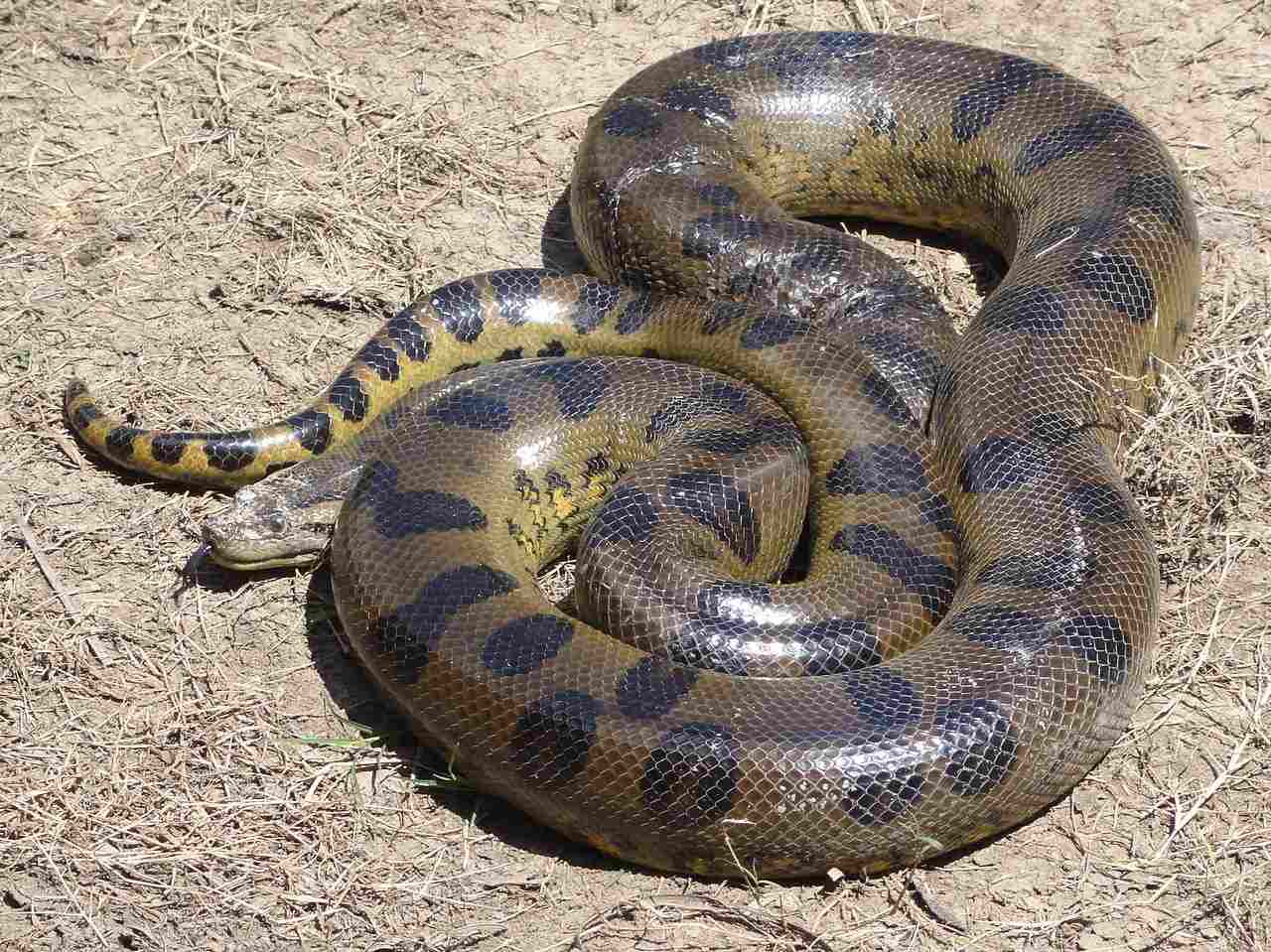
Komodo Dragon:
Prefers dry, tropical forests and savannas.
Native to the Indonesian islands of Komodo, Rinca, Flores, and Gili Motang.
Anaconda:
Thrives in tropical rainforests, swamps, and marshes.
Primarily found in South America, including the Amazon and Orinoco basins.
Comparison:
Komodo Dragons inhabit drier regions, while Anacondas are associated with more humid and aquatic environments.
Ecological Implications:
Habitat preferences determine their roles in their ecosystems, influencing prey availability and environmental interactions.
13. Tracks:
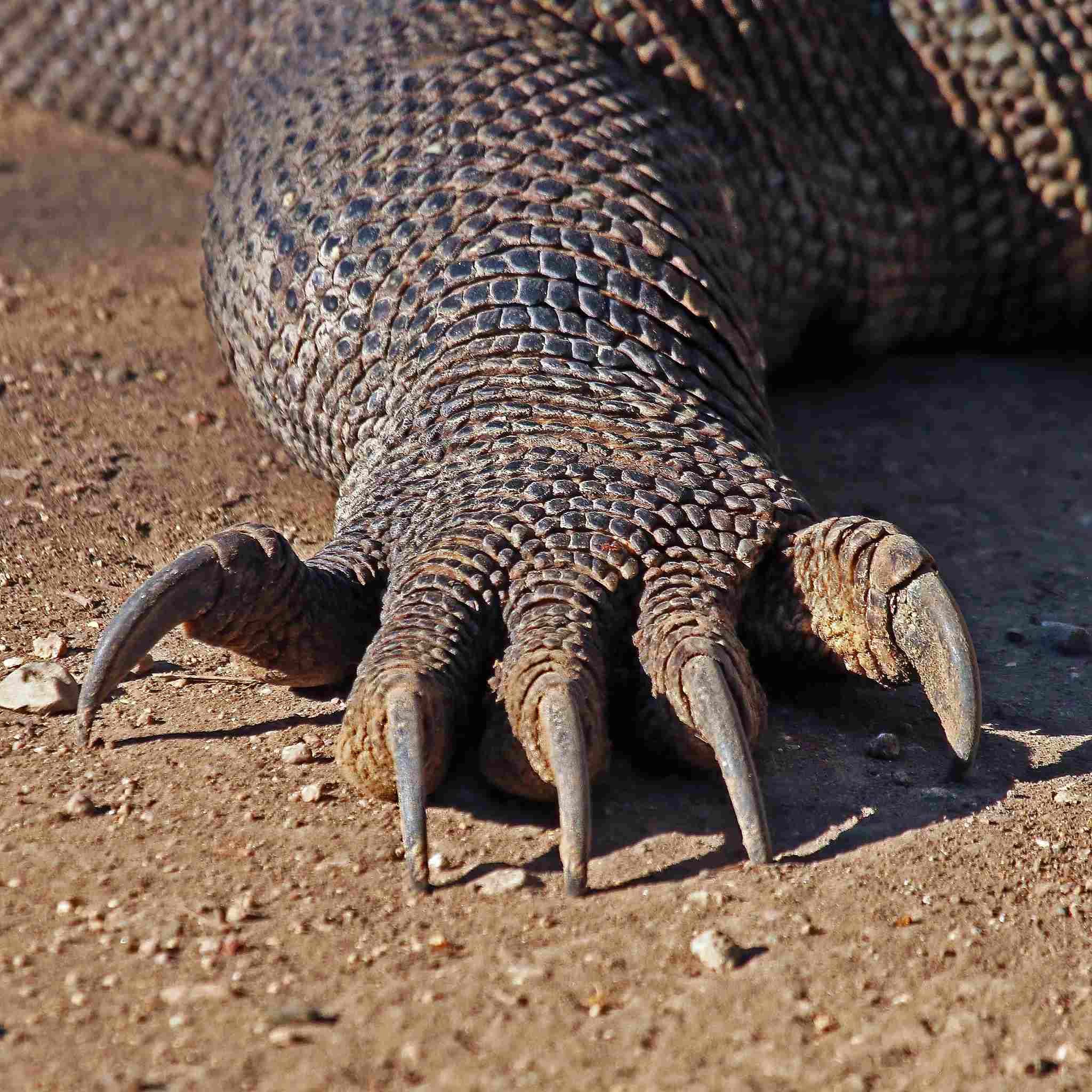
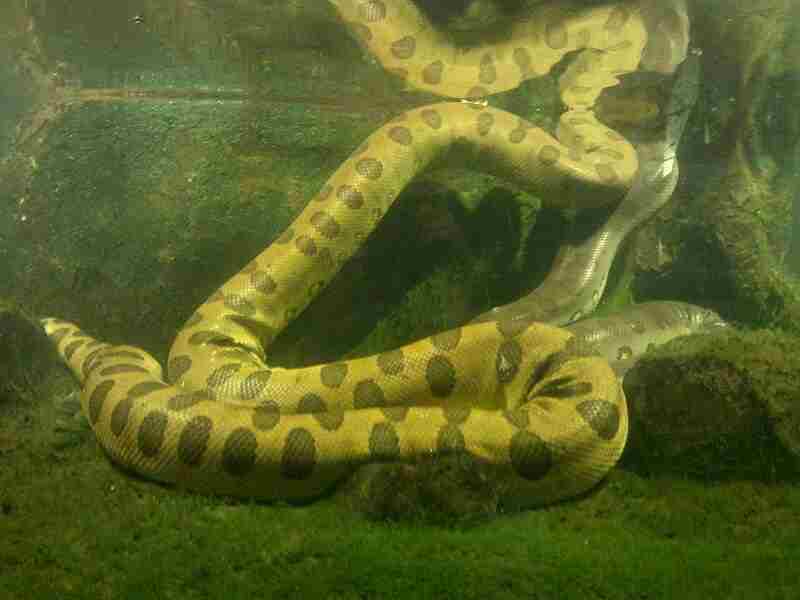
Komodo Dragon:
Clawed footprints with distinct imprints of their limbs.
Typically show a staggered pattern due to their lizard-like gait.
Anaconda:
No discernible tracks on land as their bodies do not leave clear imprints.
In water, they leave subtle disturbances on the surface.
Comparison:
Komodo Dragons leave visible tracks on land, while Anacondas are elusive in leaving tracks due to their predominantly aquatic lifestyle.
Ecological Implications:
Tracking habits can impact their effectiveness as predators and contribute to their ability to evade threats in their respective habitats.
14. Lifespan:
Komodo Dragon:
Typically lives up to 20 years in the wild.
Anaconda:
Green Anacondas can live up to 10-15 years in the wild.
Yellow Anacondas generally have a similar lifespan.
Comparison:
Komodo Dragons generally have a longer lifespan compared to Anacondas.
Ecological Implications:
Lifespan influences population dynamics and ecological interactions within their respective ecosystems.
15. Mode of Feeding:
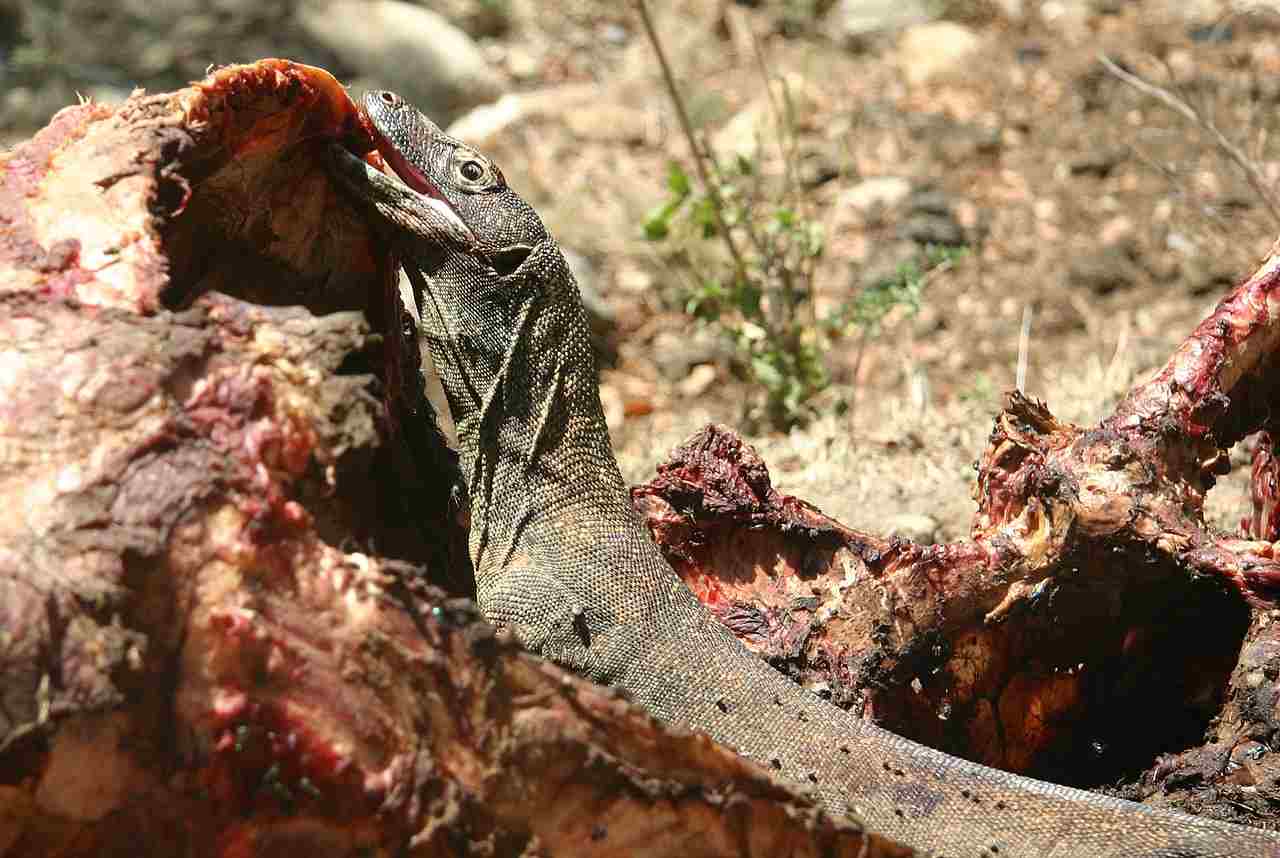
Komodo Dragon:
Carnivorous; preys on a variety of animals, including mammals, birds, and carrion.
Uses a combination of venom and physical strength to capture and subdue prey.
Anaconda:
Carnivorous; primarily hunts aquatic prey such as fish, amphibians, birds, and mammals.
Relies on constricting prey before swallowing.
Comparison:
Both are carnivorous, but Komodo Dragons exhibit a broader range of prey items, including carrion.
Ecological Implications:
Feeding habits impact the balance of their respective ecosystems by regulating prey populations.
16. Intelligence:
Komodo Dragon:
Exhibits complex behaviors, including hunting in groups.
Demonstrates problem-solving skills.
Anaconda:
Limited cognitive abilities compared to mammals.
Displays instinctual behaviors related to hunting and reproduction.
Comparison:
Komodo Dragons showcase more advanced cognitive abilities compared to Anacondas.
Ecological Implications:
Intelligence contributes to their adaptability in navigating and surviving within their ecosystems.
17. Social Behavior:
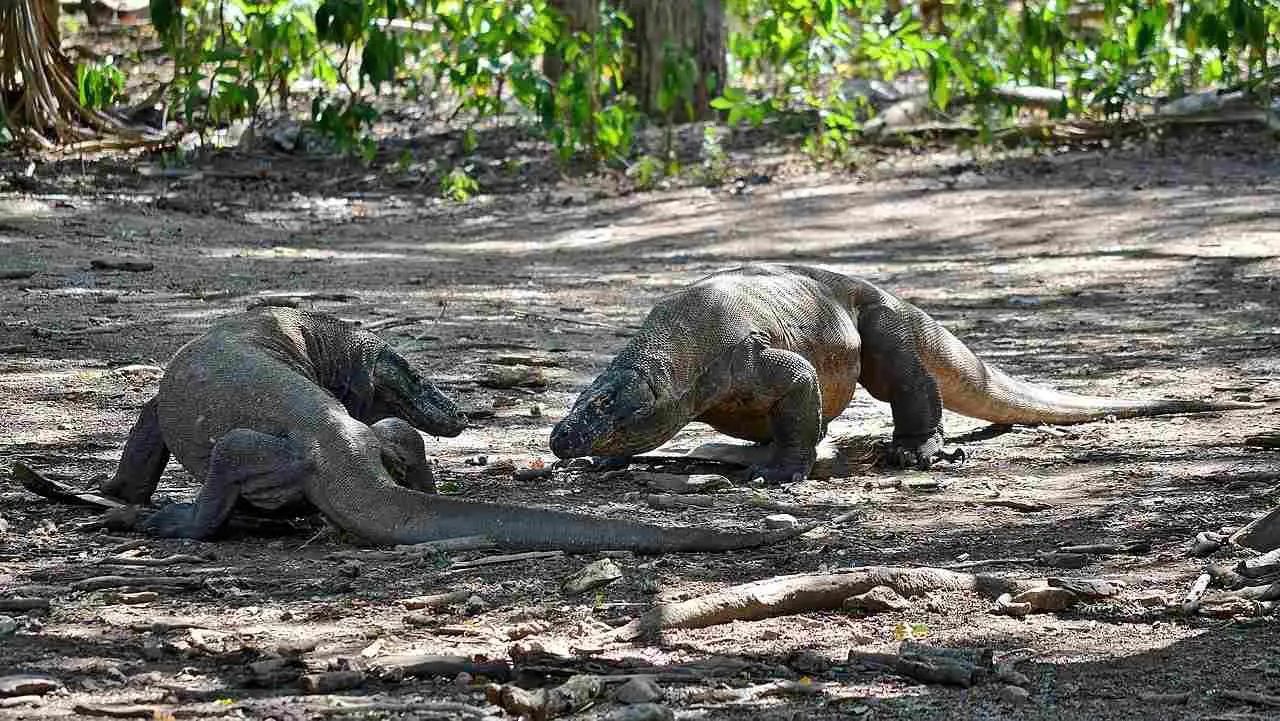
Komodo Dragon:
Generally solitary, but can exhibit group behaviors, especially during feeding.
Dominance hierarchy among individuals.
Anaconda:
Solitary except during the mating season.
Limited social interactions.
Comparison:
Both species are primarily solitary, with occasional social interactions.
Ecological Implications:
Social behaviors influence population dynamics and ecological roles within their habitats.
18. Mode of Reproduction:
Komodo Dragon:
Oviparous; females lay clutches of eggs in nests.
No parental care after laying eggs.
Anaconda:
Ovoviviparous; females retain eggs internally, giving birth to live young.
Females provide minimal parental care, with young being independent shortly after birth.
Comparison:
Komodo Dragons lay eggs, while Anacondas give birth to live young, showcasing different reproductive strategies.
Ecological Implications:
Reproductive modes influence population dynamics and the survival of offspring in their respective environments.
19. Parental Behavior:
Komodo Dragon:
Limited parental involvement after egg laying.
Hatchlings are independent and face potential cannibalism from adults.
Anaconda:
Limited parental care; females may stay with the young for a short period.
Young Anacondas are born independent and must fend for themselves.
Comparison:
Both species exhibit minimal parental care, with offspring being relatively independent.
Ecological Implications:
Limited parental care influences survival rates of offspring and population dynamics within their ecosystems.
20. Proximity to Human-Inhabited Areas:
Komodo Dragon:
Found on remote Indonesian islands.
Encounters with humans are limited but can pose a threat when they occur.
Anaconda:
Inhabits various regions in South America, including areas close to human settlements.
Encounters with humans may lead to conflicts.
Comparison:
Anacondas can be found closer to human-inhabited areas compared to the more remote Komodo Dragon habitats.
Ecological Implications:
Proximity to humans can lead to conservation concerns, as human activities may impact these species and their habitats.
21. Behavior Toward Humans:
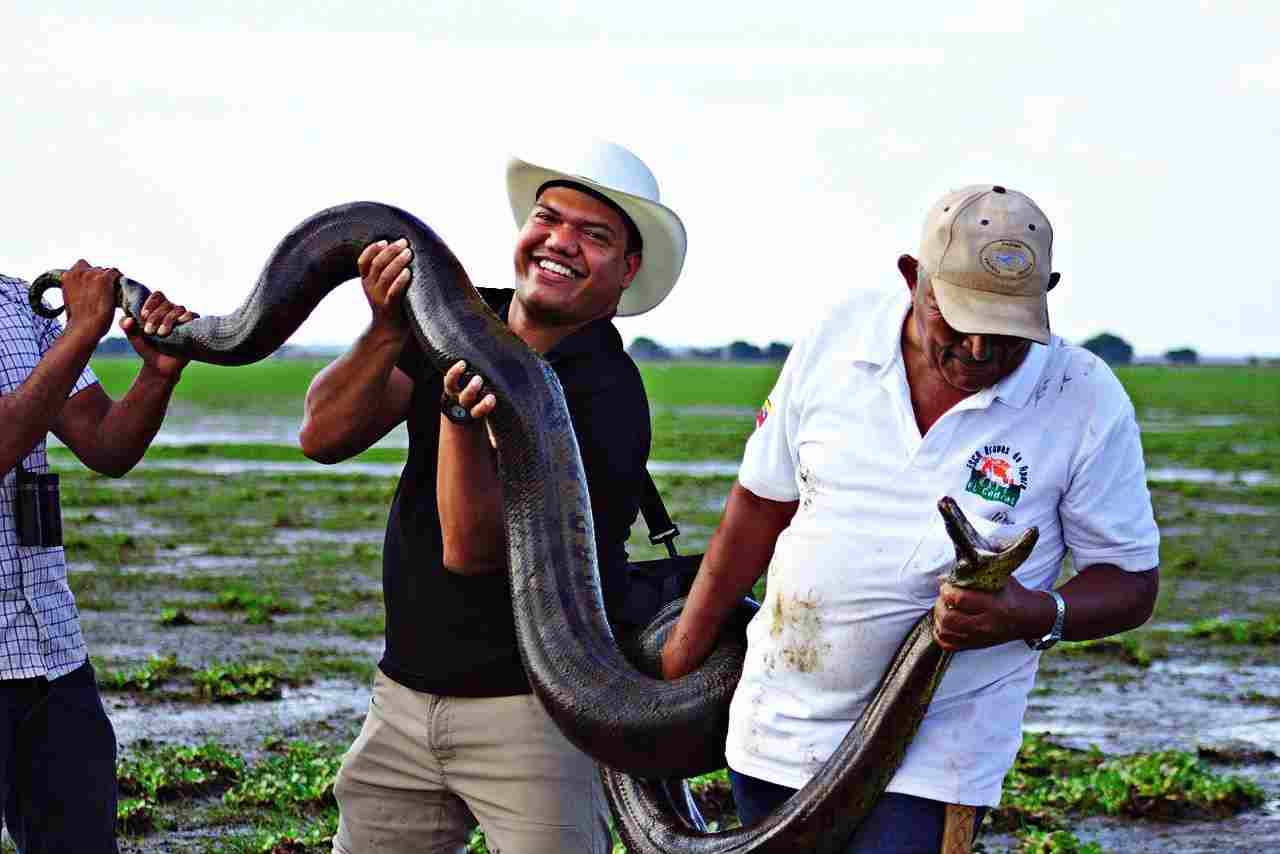
Komodo Dragon:
Generally avoids humans but can become aggressive if threatened.
Known instances of attacks on humans.
Anaconda:
Typically avoids human contact but may become defensive if provoked.
Rarely poses a significant threat to humans.
Comparison:
Both species tend to avoid humans but may exhibit defensive behavior if provoked.
Ecological Implications:
Human-wildlife interactions can impact the behavior and conservation status of these species.
22. Danger Posed to Humans:
Komodo Dragon:
Considered dangerous due to powerful bites and potential infection from bacteria in saliva.
Instances of attacks on humans, although not frequent.
Anaconda:
Generally not considered highly dangerous to humans.
Rare instances of attacks, with limited risk unless provoked.
Comparison:
Komodo Dragons pose a higher risk to humans compared to Anacondas.
Ecological Implications:
Human safety concerns may influence conservation efforts and public perceptions of these species.
23. Associated Precautions:
Komodo Dragon:
Caution advised when in their habitat; maintaining a safe distance is crucial.
Adequate medical care recommended in case of bites due to potential bacterial infections.
Anaconda:
Limited precautions needed; avoiding provocation is key.
Encountering an Anaconda in the wild generally poses minimal risk.
Comparison:
Precautions for Komodo Dragons involve greater awareness and medical considerations.
Ecological Implications:
Understanding precautions helps minimize potential conflicts and ensures the safety of both humans and these species.
24. Conservation Status:
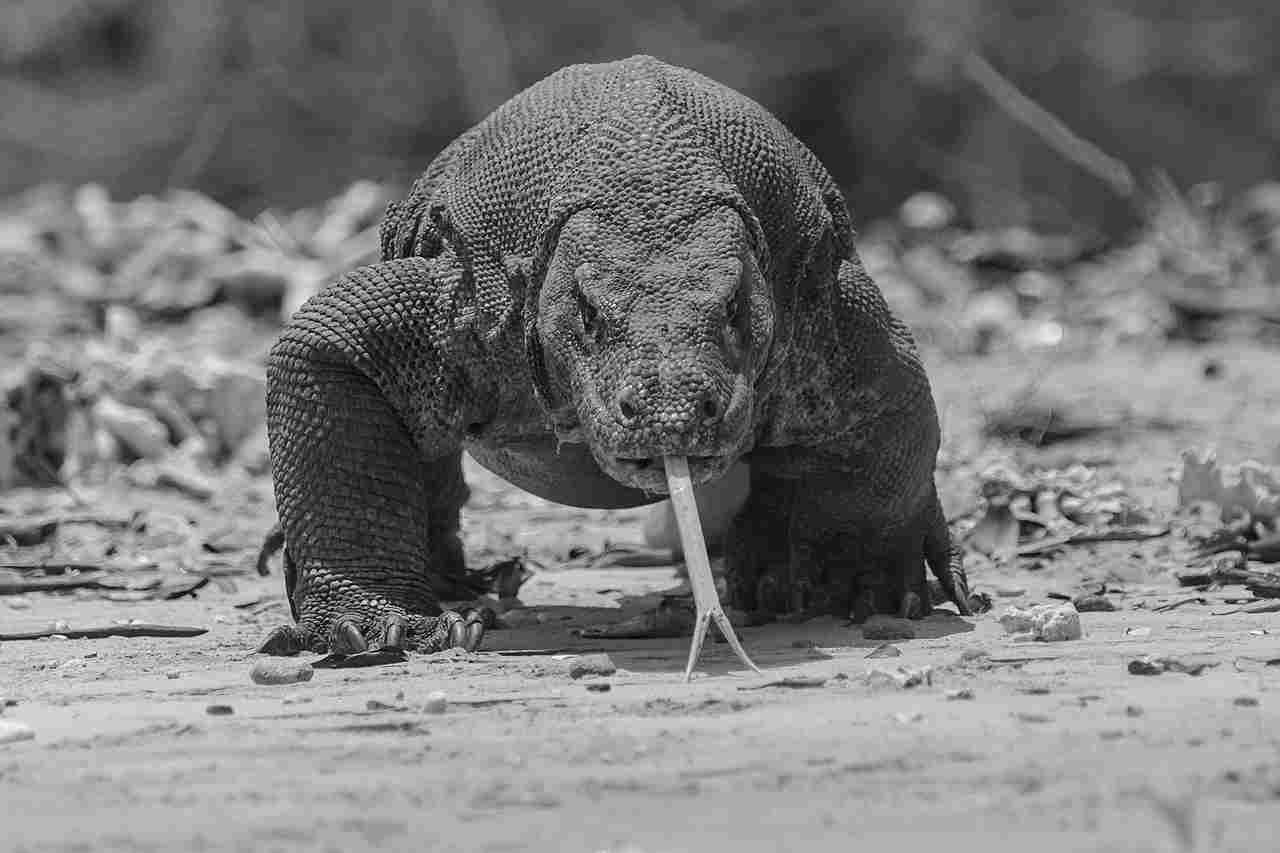
Komodo Dragon:
Listed as vulnerable on the IUCN Red List.
Facing threats such as habitat loss, human-wildlife conflict, and poaching.
Anaconda:
Conservation status varies among species; Green Anaconda is of least concern.
Habitat destruction and potential over-exploitation for the pet trade pose threats.
Comparison:
Komodo Dragons face a higher risk of extinction compared to some Anaconda species.
Ecological Implications:
Conservation efforts are crucial to maintaining biodiversity and ecosystem balance in their respective regions.
*Summary of Comparison
Appearance:
Komodo Dragon: Robust build, scaly skin, venomous bite.
Anaconda: Streamlined body, glossy skin, constrictive abilities.
Size:
Komodo Dragon: Up to 10 feet (3 meters).
Anaconda: Green Anaconda over 20 feet (6 meters), Yellow Anaconda around 10 feet (3 meters).
Weight:
Komodo Dragon: Males around 200 pounds (91 kg).
Anaconda: Green Anaconda over 550 pounds (250 kg), Yellow Anaconda around 100 pounds (45 kg).
Bite Force (PSI):
Komodo Dragon: Approximately 50 PSI.
Anaconda: Powerful bite for subduing prey.
Physical Offensive Advantages:
Komodo Dragon: Speed, sharp claws, venom.
Anaconda: Constriction, aquatic hunting.
Physical Defensive Advantages:
Komodo Dragon: Tough skin, climbing ability.
Anaconda: Aquatic camouflage, muscular body.
Speed:
Komodo Dragon: Up to 12 mph (19 km/h).
Anaconda: Faster in water, around 10 mph (16 km/h).
Agility:
Komodo Dragon: Agile on land, climbs trees.
Anaconda: Highly agile in water.
Senses:
Both rely on excellent sense of smell, but Komodo Dragons have better eyesight on land.
Overall Physical Capacity:
Komodo Dragon: Versatile on land.
Anaconda: Specialized for aquatic environments.
Habitat Preference(s) and Geographic Region:
Komodo Dragon: Dry, tropical forests in Indonesian islands.
Anaconda: Tropical rainforests, swamps, and marshes in South America.
Tracks:
Komodo Dragon: Clawed footprints on land.
Anaconda: No discernible tracks on land, subtle disturbances in water.
Lifespan:
Komodo Dragon: Up to 20 years.
Anaconda: Green Anaconda 10-15 years, Yellow Anaconda similar.
Mode of Feeding:
Komodo Dragon: Carnivorous, broad range of prey.
Anaconda: Carnivorous, primarily aquatic prey.
Intelligence:
Komodo Dragon: More advanced cognitive abilities.
Anaconda: Limited cognitive abilities.
Social Behavior:
Both primarily solitary, occasional social interactions.
Mode of Reproduction:
Komodo Dragon: Oviparous.
Anaconda: Ovoviviparous.
Parental Behavior:
Limited parental care in both species.
Proximity to Human-Inhabited Areas:
Komodo Dragon: Remote Indonesian islands.
Anaconda: Closer to human settlements in South America.
Behavior Toward Humans:
Both generally avoid humans, exhibit defensive behavior if provoked.
Danger Posed to Humans:
Komodo Dragon poses a higher risk due to powerful bites and potential bacterial infections.
Associated Precautions:
Komodo Dragons require greater precautions due to potential bacterial infections.
Conservation Status:
Komodo Dragon: Vulnerable.
Anaconda: Green Anaconda least concern, other species may face threats.
Conclusion
I. Similarities:
Both are apex predators in their ecosystems.
Carnivorous with adaptations for hunting and capturing prey.
II. Differences:
Varying ecological niches and habitats.
Different modes of reproduction and parental care.
Distinct levels of danger posed to humans.
Differing conservation statuses, with Komodo Dragons facing higher extinction risks.

